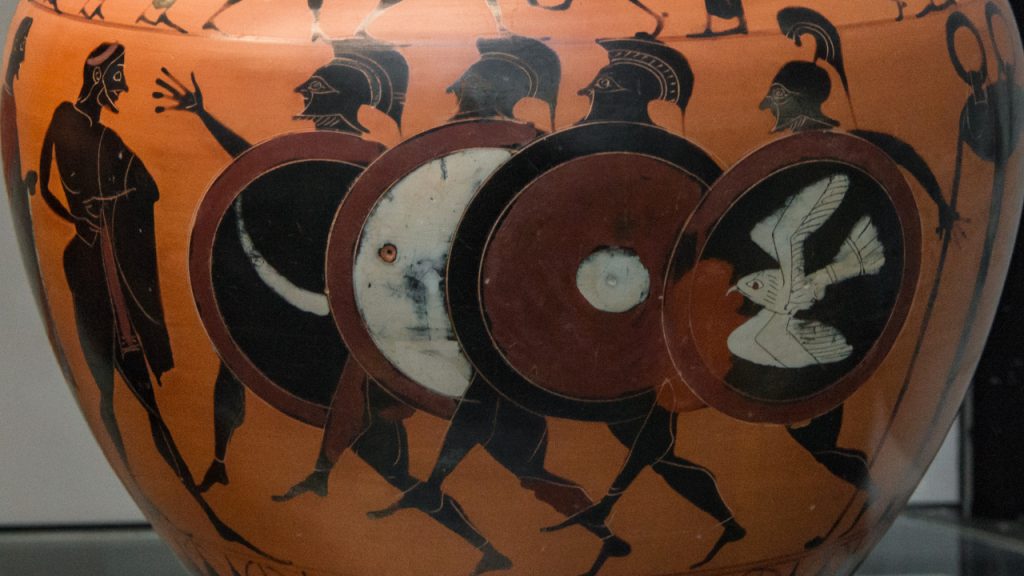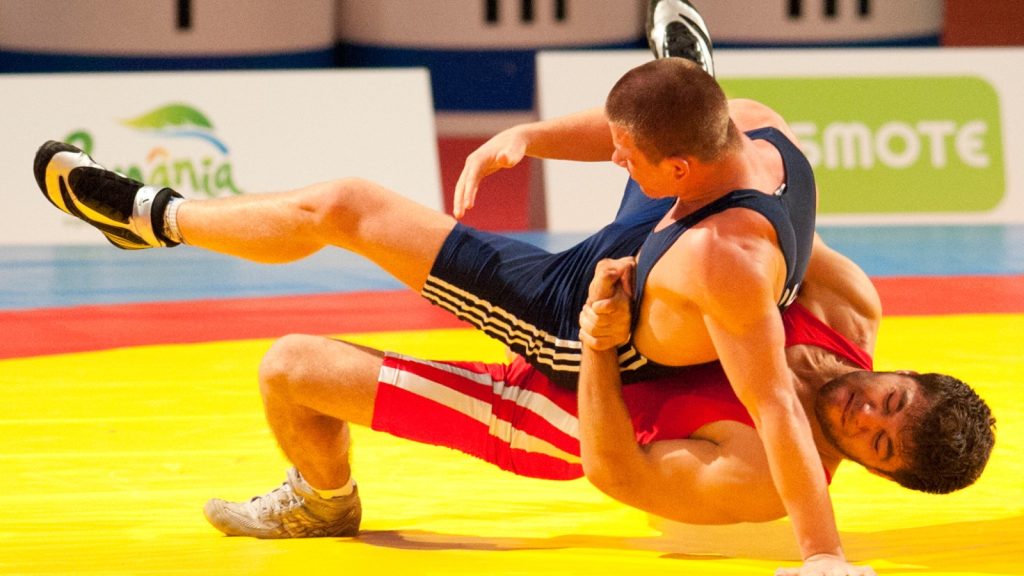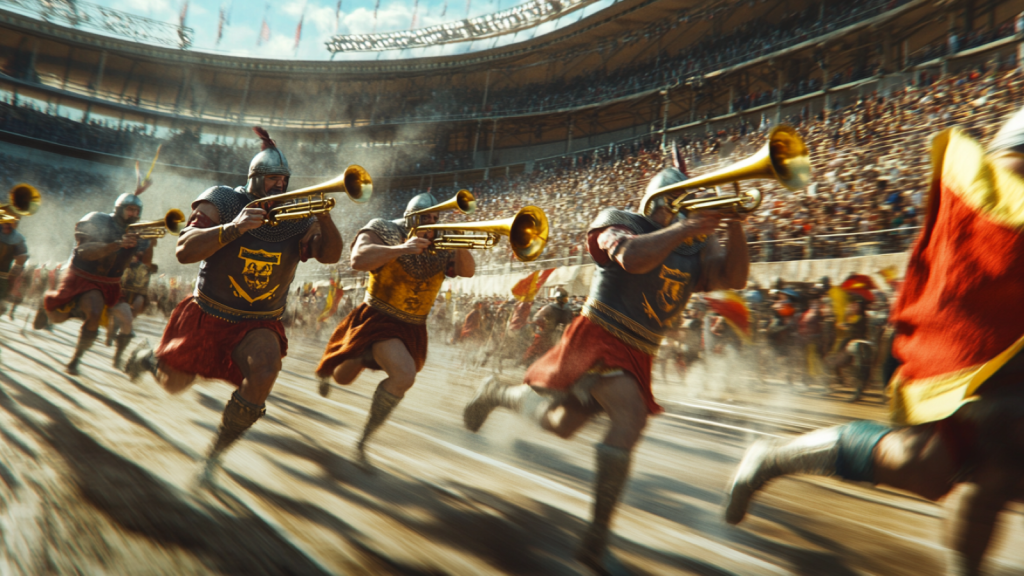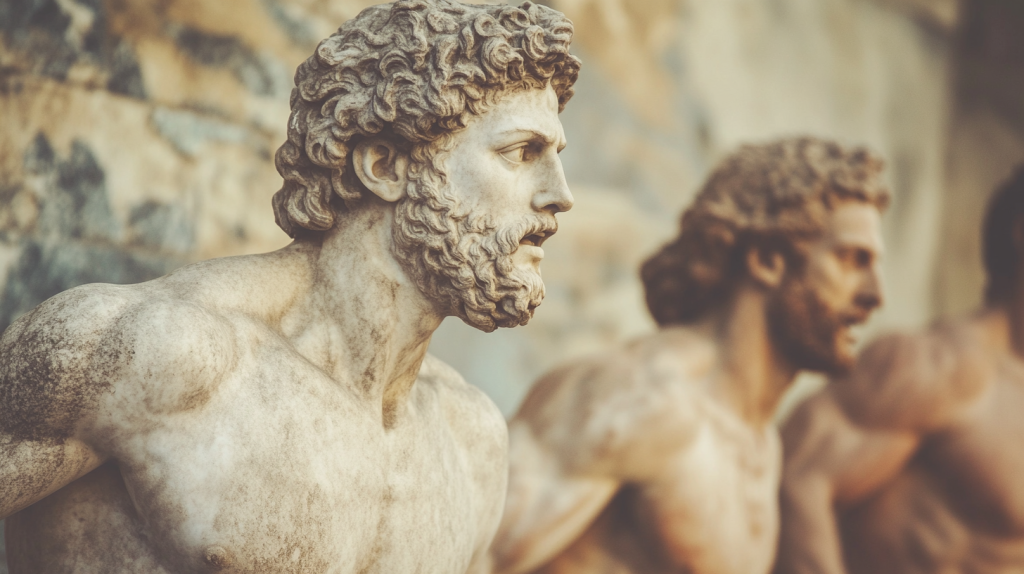When we think of the Olympic Games, most of us picture classic events like sprinting, gymnastics, or swimming. But back in ancient Greece, the Olympics were a whole different world! The athletes competed in events that were far removed from today’s clean and polished sports. Many of these competitions were brutal, bizarre, or downright baffling by modern standards. From animal-based events to nearly lawless hand-to-hand combat, the ancient games pushed athletes to their limits in ways we might find shocking today. Let’s take a journey through some of these forgotten ancient sports and imagine what it would be like to witness them today.
Pankration: The Ultimate Ancient Fight

Pankration was a no-holds-barred fighting sport that combined elements of boxing and wrestling, with hardly any rules. The only things off-limits were biting and gouging eyes—everything else was fair game. Fights could be vicious, and some even resulted in serious injury or death. Today’s combat sports seem tame in comparison to this brutal free-for-all.
Hoplitodromos: Racing in Full Armour

Imagine running a race while decked out in a heavy helmet, chest plate, and shield. That’s exactly what the Hoplitodromos was all about! Competitors had to sprint while wearing the full armour of a Greek hoplite soldier. The added weight made this race a true test of endurance and strength. Modern sprinters would likely be horrified by the sheer difficulty of this event.
Chariot Racing: A Deadly Spectacle

Chariot racing wasn’t just a test of speed—it was a dangerous, high-stakes race that often ended in collisions, crashes, and injuries. Teams of horses pulled the chariots around a track, with drivers trying to outpace and outmanoeuvre each other. With no safety gear and only wooden wheels and reins to keep control, it was a thrilling but hazardous event.
Apobates: Leaping Off a Moving Chariot

In this wild event, athletes would jump off a speeding chariot, run alongside it, and then leap back on. It wasn’t enough to just ride the chariot; athletes had to perform this daring stunt multiple times during the race. Today, we’d probably compare it to an extreme version of parkour—except with horses!
Stadion Race: A 200-Metre Dash

The stadion race was a short, high-speed sprint that was one of the oldest Olympic events. Unlike modern races, though, athletes competed completely unclothed. This wasn’t just for shock value—it was part of the Greeks’ belief in celebrating the human body. A bit surprising to think how it would go over in today’s televised games!
Mule Cart Racing: Less Glamorous, More Chaos

While horse-drawn chariot races were a prestigious event, there was also a much less dignified race involving mule-drawn carts. These races were chaotic and much slower, often with the stubborn mules causing trouble on the track. It’s hard to imagine this sort of event in today’s sleek and competitive Olympics!
Pyx: The Original Bare-Knuckle Boxing

Boxing has been an Olympic sport for centuries, but the ancient version, known as Pyx, was much more savage. Athletes fought bare-knuckled, often to the point of serious injury. There were no rounds, and the match continued until one fighter could no longer continue. Compared to today’s heavily regulated boxing, Pyx was a brutal affair.
Long Jump with Weights: Jump Farther with Hand Weights

In the ancient Olympics, long jumpers didn’t just rely on their legs—they used weights called halteres, which they held in their hands while jumping. The idea was that the weights would help them gain momentum in the air. It’s a strange twist on the modern event, and it’s hard to say if it would help or hinder today’s athletes!
Keles: Horseback Sprint Without a Saddle

The Keles event was a bareback horse race that required immense control and skill. Riders had no saddle, stirrups, or reins, relying only on their legs and body to guide the horse. With no modern equipment or protective gear, it was a thrilling but dangerous spectacle, where both horse and rider needed to be in sync.
The Pentathlon: A Gruelling Combo of Five Sports

The ancient pentathlon included five events: long jump, javelin, discus, a foot race, and wrestling. This test of versatility crowned the ultimate athlete, but with far fewer rules than modern sports. Today’s decathlon seems more structured by comparison, but the ancient version pushed competitors to their limits in everything from combat to precision.
Race for Heralds and Trumpeters

This unusual event saw Olympic officials—specifically heralds and trumpeters—competing in a sprinting race to see who could deliver their duties the fastest. It was a test of both speed and voice, as the winners got the honour of announcing the other events. It’s hard to imagine this job-based competition fitting into today’s athletic-focused games!
16 American Foods Brits Can’t Stand

Food preferences can vary wildly across cultures, and what’s considered a delicacy in one country might be seen as downright bizarre in another. This cultural divide is particularly evident when comparing American and British cuisines. While the two nations share a common language, their tastes in food can be worlds apart. From overly sweet concoctions to processed cheese products, there are certain American foods that many Brits find hard to stomach.
Read More: 16 American Foods Brits Can’t Stand
Ellen has been obsessed with logic puzzles, jigsaws, and cryptograms since she was a kid. After learning she was taught how to play chess wrong by a family friend (so they could win), she joined her school chess club and the rest is history.


